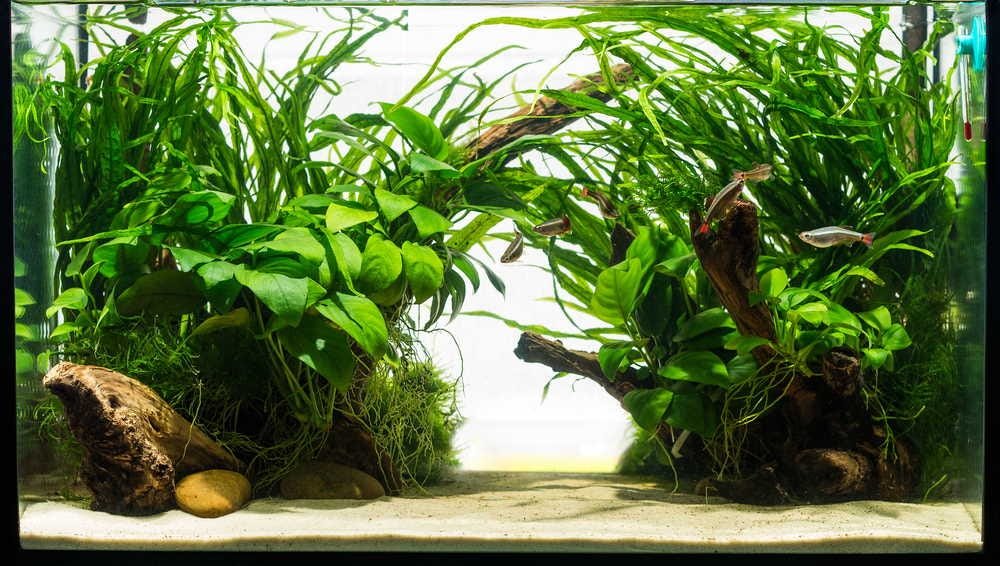Why is a planted aquarium important to have?
Constructing a freshwater-planted aquarium is a fascinating way to observe the delicate balance of aquatic ecosystems, right within the comfort of your own home. These aquascapes, adorned with carefully selected aquatic flora and fauna, mirror the serene beauty of natural underwater habitats.
The synergy between aquatic plants and fish in a planted aquarium fosters a self-sustaining environment, often easier to maintain than conventional tank setups. Fish provide carbon dioxide and nutrients vital for plant growth, while the plants reciprocate by offering additional filtration and oxygenation, ensuring a clean and healthy habitat for the fish.
Whether you are a beginner or an experienced aquarium enthusiast, the allure of a planted aquarium is undeniable. Let us embark on a journey to transform a 20-gallon high (20H) aquarium into a breathtaking natural oasis, complete with resilient aquatic plants and harmonious community fish.
Step-by-Step Guide:
Step 1: Gather Your Supplies
– 20-gallon high aquarium tank
– Stable aquarium stand
– Substrate (nutrient-rich plant substrate or gravel)
– Selection of easy-to-grow aquatic plants (e.g., Java fern, Anubias, Amazon sword, Vallisneria)
– Natural aquarium decorations (rocks, driftwood)
– Efficient filtration system
– Heater (if required)
– Aquarium thermometer
– Water conditioner
– Essential aquarium test kits
– Fish net
– Aquarium vacuum for maintenance
– Bucket for water changes
Step 2: Set up the Tank
– Place the aquarium on a level, sturdy surface away from direct sunlight and drafts.
– Rinse the substrate thoroughly to remove debris and spread it evenly across the tank’s bottom.
– Arrange decorations like rocks and driftwood to create a naturalistic landscape and hiding spots for your fish.
– Fill the tank with dechlorinated water, leaving ample space for equipment and fish.
Step 3: Install Equipment
– Install the filtration system as per the manufacturer’s guidelines.
– If necessary, set up a heater to maintain optimal water temperature for your chosen fish species.
– Place the aquarium thermometer for easy monitoring of water temperature.
Step 4: Plant Your Aquarium
– Gently remove plants from their containers and rinse off excess substrate.
– Plant each aquatic specimen in the substrate, being careful not to bury the rhizome (for plants like Java fern and Anubias).
– Arrange plants by height and aesthetic preferences, leaving open spaces for fish movement.
Step 5: Cycle the Aquarium
– Allow the aquarium to run for several days to establish beneficial bacteria crucial for the nitrogen cycle. – Regularly test water parameters (ammonia, nitrite, nitrate) using appropriate aquarium test kits to confirm the tank’s cycling before introducing fish.
Step 6: Introduce Fish and Maintain the Aquarium
– Gradually introduce fish to the aquarium, starting with a small number to prevent overcrowding.
– Perform routine water changes (around 20-30% weekly) using an aquarium vacuum to maintain water clarity and quality.
– Trim and maintain aquatic plants as needed to prevent overgrowth and maintain an optimal ecosystem balance.
– Regularly monitor fish behavior and water parameters to ensure the health and vitality of your aquatic inhabitants.
By following these steps, we can create a captivating natural planted aquarium, providing a serene sanctuary for both fish and aquatic plants. Let’s, Enjoy the tranquility and marvel at the thriving underwater world we have created within your home.


